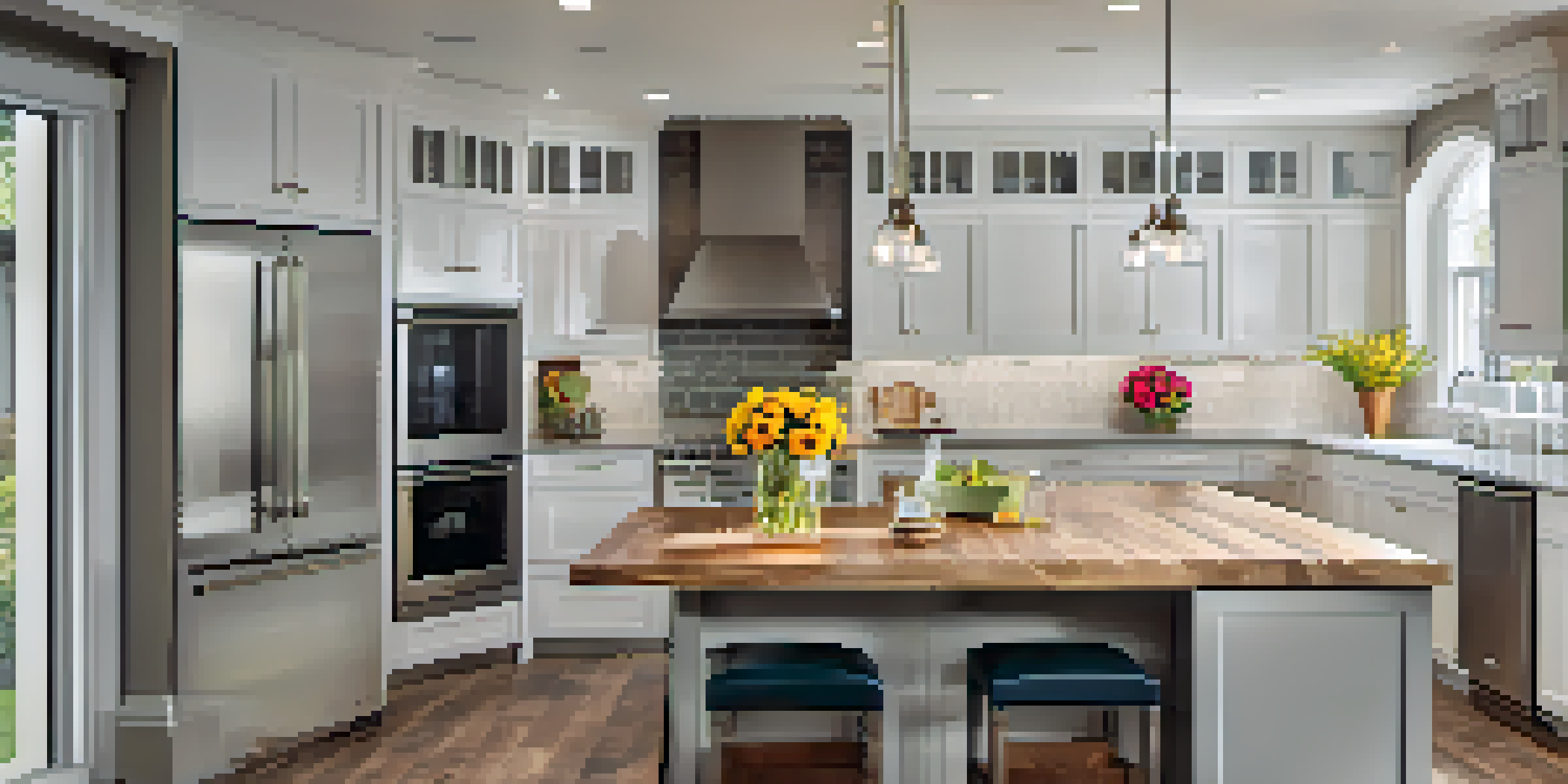Creating a Flipping Checklist for Home Renovations

Understanding the Home Flipping Process
Home flipping involves buying properties, renovating them, and selling for profit. It's essential to understand this cycle to maximize gains. Think of it like a relay race; each step must be executed flawlessly to pass the baton effectively.
Success is where preparation and opportunity meet.
Before diving into renovations, familiarize yourself with the local real estate market. Researching trends can help you identify which properties have the most potential. For instance, a home in a rapidly developing neighborhood might yield better returns than one in a stagnant area.
Ultimately, a well-defined process helps streamline your efforts and keeps you focused. A checklist not only organizes tasks but also ensures that nothing crucial is overlooked, much like a pilot's pre-flight checklist.
Setting Your Budget for Renovations
Budgeting is a critical aspect of home flipping; it sets the stage for your entire project. Start by determining how much you're willing to spend on both the purchase and renovations. This is like drawing the line in the sand—know where you stand to prevent overspending.

Consider creating a detailed budget that includes all potential costs, from materials to labor. This will give you a clearer picture of your financial landscape. Don't forget to factor in unexpected expenses, which often crop up like uninvited guests at a party.
Know Your Budget Before Flipping
Establishing a clear budget for both property purchase and renovations is crucial to avoid overspending and making informed decisions.
Having a budget not only keeps your finances in check but also allows you to make informed decisions. If a renovation exceeds your budget, you may need to reassess your priorities or find cost-effective alternatives.
Choosing the Right Property to Flip
Selecting the right property is akin to finding the perfect canvas for a masterpiece. Look for homes that need cosmetic updates rather than structural repairs, as they are typically more manageable and less costly. Properties in desirable neighborhoods can also enhance resale value.
The best way to predict the future is to create it.
Conduct thorough inspections to uncover any hidden issues that might complicate your project. A small crack in the foundation could turn into a large expense if not addressed early. Think of it as peeling back the layers of an onion; you want to get to the heart of the matter.
The right property can make or break your flipping success. Always weigh the potential risks against the rewards, and remember that sometimes, less is more when it comes to renovation projects.
Creating a Detailed Renovation Plan
A solid renovation plan serves as your roadmap throughout the project. Start by listing all the improvements you want to make, prioritizing them based on impact and budget. Imagine this as a game plan for a sports team; clarity and strategy are crucial for success.
Consider consulting with contractors or real estate professionals to gain insights on what renovations yield the best ROI. For example, kitchen and bathroom remodels often provide significant returns. Collaborating with experts can save you time and effort in the long run.
Choose Properties Wisely
Selecting the right property, ideally one needing cosmetic updates in a desirable neighborhood, significantly impacts your flipping success.
Once your plan is in place, break down tasks into manageable steps, assigning deadlines to keep you on track. This structured approach can help you avoid feeling overwhelmed and ensures a smoother renovation process.
Sourcing Materials and Contractors
Finding the right materials and contractors is essential for a successful flip. Research different suppliers to compare prices and quality. Think of it like shopping for ingredients; the quality can impact the final dish significantly.
When hiring contractors, seek recommendations from trusted sources or read online reviews. It’s vital to work with professionals who understand your vision and can execute it effectively. Just as in a movie, the right cast can make all the difference in the final product.
Establish clear communication with your chosen contractors to ensure everyone is on the same page. This helps prevent misunderstandings and keeps your project moving forward smoothly. A well-coordinated team can turn your renovation dreams into reality.
Staying on Schedule During Renovations
Managing timelines is crucial in home flipping; delays can eat into your profits. Create a timeline for each phase of the renovation, allowing for some flexibility for unexpected issues. Think of it as a train schedule; punctuality keeps everything on track.
Regularly check in with contractors to assess progress and address any challenges that arise. Open communication can help you stay ahead of potential delays and maintain project momentum. Just like a team in a relay race, everyone needs to be in sync.
Market Your Renovation Effectively
High-quality photos and engaging staging are essential to attract potential buyers and make a strong first impression after renovations.
By remaining proactive and adaptable, you can ensure that your renovation stays on schedule. Consistent monitoring allows you to celebrate small victories along the way, keeping morale high throughout the project.
Marketing Your Flipped Property Effectively
Once renovations are complete, it's time to showcase your hard work and attract potential buyers. High-quality photos and engaging descriptions can make your property stand out in listings. Think of it as dressing up for a first date; first impressions matter.
Consider staging the home to highlight its best features. A well-staged property allows buyers to envision themselves living there, making it more appealing. Just like a movie trailer, it should entice viewers and leave them wanting more.

Utilizing social media and online listings can significantly boost your property's visibility. Share your renovation journey to connect with potential buyers and create excitement. A little storytelling can go a long way in capturing interest.
Reviewing and Learning from Each Flip
After selling your flipped property, take time to reflect on the entire process. Evaluate what worked well and what could be improved for future projects. This self-assessment is like a post-game analysis; it's crucial for growth and development.
Gather feedback from buyers and contractors to gain insights into their experiences. Their perspectives can provide valuable lessons that might not have been obvious during the project. Learning from others is a powerful tool for improvement.
By continuously refining your approach, you can enhance your flipping skills and increase your chances of success in future endeavors. Embrace each flip as a stepping stone toward becoming a more seasoned renovator.